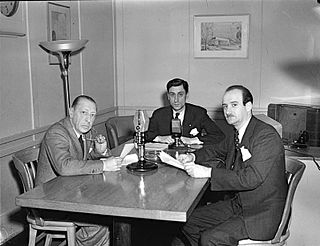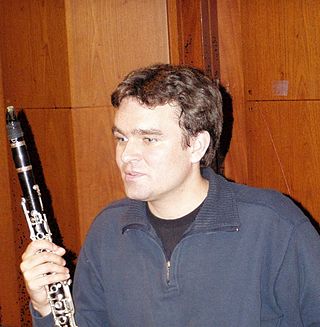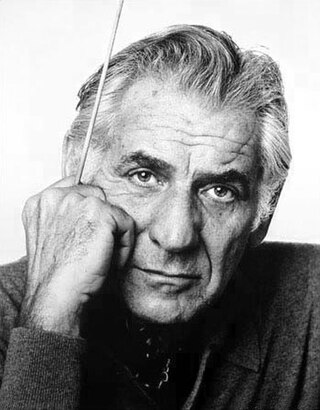In music, the dynamics of a piece is the variation in loudness between notes or phrases. Dynamics are indicated by specific musical notation, often in some detail. However, dynamics markings require interpretation by the performer depending on the musical context: a specific marking may correspond to a different volume between pieces or even sections of one piece. The execution of dynamics also extends beyond loudness to include changes in timbre and sometimes tempo rubato.

The Carnival of the Animals is a humorous musical suite of fourteen movements, including "The Swan", by the French composer Camille Saint-Saëns. The work, about 25 minutes in duration, was written for private performance by two pianos and chamber ensemble; Saint-Saëns prohibited public performance of the work during his lifetime, feeling that its frivolity would damage his standing as a serious composer. The suite was published in 1922, the year after his death. A public performance in the same year was greeted with enthusiasm, and the work has remained among his most popular. In addition to the original version for chamber ensemble, the suite is frequently performed with a full orchestral complement of strings.
A variety of musical terms are likely to be encountered in printed scores, music reviews, and program notes. Most of the terms are Italian, in accordance with the Italian origins of many European musical conventions. Sometimes, the special musical meanings of these phrases differ from the original or current Italian meanings. Most of the other terms are taken from French and German, indicated by Fr. and Ger., respectively.

Pulcinella is a 21-section ballet by Igor Stravinsky with arias for soprano, tenor and bass vocal soloists, and two sung trios. It is based on the 18th-century play Quatre Polichinelles semblables, or Four similar Pulcinellas, revolving around a stock character from commedia dell'arte. The work premiered at the Paris Opera on 15 May 1920 under the baton of Ernest Ansermet. The central dancer, Léonide Massine, created both the libretto and the choreography, while Pablo Picasso designed the costumes and sets. The ballet was commissioned by Sergei Diaghilev, impresario of the Ballets Russes. A complete performance takes 35–40 minutes. Stravinsky revised the score in 1965.

Six moments musicaux, Op. 16, is a set of solo piano pieces composed by the Russian composer Sergei Rachmaninoff between October and December 1896. Each Moment musical reproduces a musical form characteristic of a previous musical era. The forms that appear in Rachmaninoff's incarnation are the nocturne, song without words, barcarolle, virtuoso étude, and theme and variations.
Histoire du soldat, or Tale of the Soldier, as it was first published, is an hour-long 1918 theatrical work to be "read, played and danced (lue, jouée et dansée)" by three actors, one or more dancers, and a septet of instruments. Its music is by Igor Stravinsky, its libretto, in French, by Swiss writer Charles Ferdinand Ramuz; the two men conceived it together, their basis being the Russian tale The Runaway Soldier and the Devil in the collection of Alexander Afanasyev.
A clarinet–violin–piano trio is a standardized chamber musical ensemble made up of one clarinet, one violin, and one piano participating in relatively equal roles, or the name of a piece written for such a group.
The Sonata in F major is a bassoon sonata with piano accompaniment written by William Hurlstone in 1904, two years before his death. It was first published by Avision in 1907, and was later re-issued by Emerson in 1976.

Leonard Bernstein's Symphony No. 2 The Age of Anxiety is a piece for orchestra and solo piano. The piece was composed from 1948 to 1949 in the United States and Israel, and was revised in 1965. It is titled after W. H. Auden's eponymous poem, and dedicated to Serge Koussevitzky.
Werner Reinhart was a Swiss merchant, philanthropist, amateur clarinetist, and patron of composers and writers, particularly Igor Stravinsky and Rainer Maria Rilke. Reinhart knew and corresponded with many artists and musicians of the early-mid 20th century in Europe world, and his Villa Rychenberg in Winterthur became an international meeting point for musicians and writers.
John Bruce Yeh is an American clarinetist. He has been the assistant principal clarinetist and E-flat clarinetist of the Chicago Symphony Orchestra since 1977. Yeh is the founder and director of the chamber ensemble, Chicago Pro Musica, whose first recording, Stravinsky's L'Histoire du soldat, won the 1985 Grammy Award for the Best New Classical Artist.
Le festin d'Ésope, Op. 39 No. 12, is a piano étude by Charles-Valentin Alkan. It is the final étude in the set Douze études dans tous les tons mineurs, Op. 39, published in 1857. It is a work of twenty-five variations based on an original theme and is in E minor. The technical skills required in the variations are a summation of the preceding études.

Igor Stravinsky wrote the Ebony Concerto in 1945 for the Woody Herman band known as the First Herd. It is one in a series of compositions commissioned by the bandleader/clarinetist featuring solo clarinet, and the score is dedicated to him. It was first performed on March 25, 1946 in Carnegie Hall in New York City, by Woody Herman's Band, conducted by Walter Hendl.

Henri Frédien Tomasi was a French classical composer and conductor. He was noted for compositions such as In Praise of Folly, Nuclear Era and The Silence of the Sea.
Sergei Prokofiev's Piano Sonata No. 3 in A minor, Op. 28 (1917) is a sonata composed for solo piano, using sketches dating from 1907. Prokofiev gave the première of this in St. Petersburg on 15 April 1918, during a week-long festival of his music sponsored by the Conservatory.
Three Easy Pieces, also referred to by its original French title Trois pièces faciles, is a collection of pieces for four hands by Russian composer Igor Stravinsky. It was finished in 1915 and was published as a set in the winter of 1917.
Carl Maria von Weber wrote his Concertino for Clarinet in E-flat major, Op. 26, J. 109 for clarinetist Heinrich Bärmann in 1811. Weber wrote the work in three days between March 29 and April 3. Bärmann learned the work over the next three days and the command performance, for which King Maximilian I of Bavaria purchased 50 tickets, took place on the evening of April 5.

Fantasie for Solo Clarinet is a solo instrumental work by Jörg Widmann and was composed in 1993. It is a showpiece. It offers a Romantic melodious sound with dance, klezmer and jazz music elements in a "Harlequin spirit".
The Sei pezzi per pianoforte, P 044, is a set of six solo piano pieces written by the Italian composer Ottorino Respighi between 1903 and 1905. These predominantly salonesque pieces are eclectic, drawing influence from different musical styles and composers. The pieces have various musical forms and were composed separately and later published together between 1905 and 1907 in a set under the same title for editorial reasons; Respighi had not conceived them as a suite, and therefore did not intend to have uniformity among the pieces. The set, under Bongiovanni, became his first published work. Five of the six pieces are derived from earlier works by Respighi, and only one of them, the "Canone", has an extant manuscript.

Divertimento, or Divertimento for Orchestra, is a suite of eight orchestral bagatelles by American composer Leonard Bernstein. Completed in 1980 and written to celebrate the centenary of the Boston Symphony Orchestra, it is well-known for featuring the notes B and C in most of its melodic material.
![]() = 52, making it by far the slowest of the three pieces. It is made up of a long, plodding series of quarter and eighth notes, adorned by the occasional grace notes and often interrupted by a breath mark. The lower register of the clarinet is explored here, with many leaps going from the upper to the lower registers of the instrument. The last measure is marked "poco più f e poco più mosso", or "A little more forte and a little more motion". This last measure is to be played much quicker and at a louder dynamic so as to create a contrast with the rest of the piece. A sustained concert C ends the first piece in a long fade-out.
= 52, making it by far the slowest of the three pieces. It is made up of a long, plodding series of quarter and eighth notes, adorned by the occasional grace notes and often interrupted by a breath mark. The lower register of the clarinet is explored here, with many leaps going from the upper to the lower registers of the instrument. The last measure is marked "poco più f e poco più mosso", or "A little more forte and a little more motion". This last measure is to be played much quicker and at a louder dynamic so as to create a contrast with the rest of the piece. A sustained concert C ends the first piece in a long fade-out.![]() = 168, with an eighth note being treated as three sixteenth notes. The piece can be segmented into three sections. The first is a flurry of sextuplets and thirty-second notes that are extremely technically challenging. The second section is quieter and calmer, with the clarinetist playing fast eighth notes in the lower register. The third section is a recapitulation of the first, bringing back the same sextuplet patterns from earlier. The second piece also ends softly, with a sudden change from a f to p dynamic.
= 168, with an eighth note being treated as three sixteenth notes. The piece can be segmented into three sections. The first is a flurry of sextuplets and thirty-second notes that are extremely technically challenging. The second section is quieter and calmer, with the clarinetist playing fast eighth notes in the lower register. The third section is a recapitulation of the first, bringing back the same sextuplet patterns from earlier. The second piece also ends softly, with a sudden change from a f to p dynamic.![]() = 160, the piece is characterized by much rapid syncopation and frequently shifting time signatures, made more complicated by the accents placed on certain notes. It maintains a near-constant f dynamic until the very end, where the player backs down to a softer dynamic and ending with one final grace note.
= 160, the piece is characterized by much rapid syncopation and frequently shifting time signatures, made more complicated by the accents placed on certain notes. It maintains a near-constant f dynamic until the very end, where the player backs down to a softer dynamic and ending with one final grace note.






